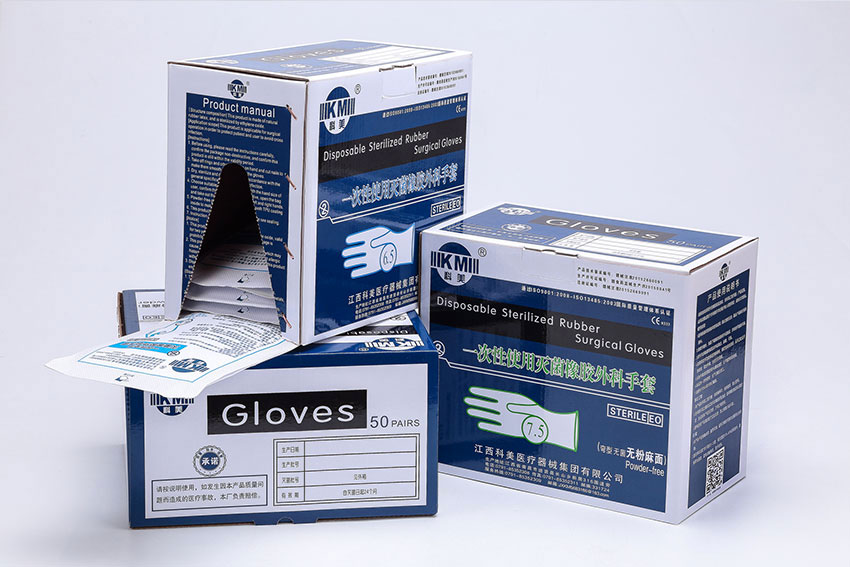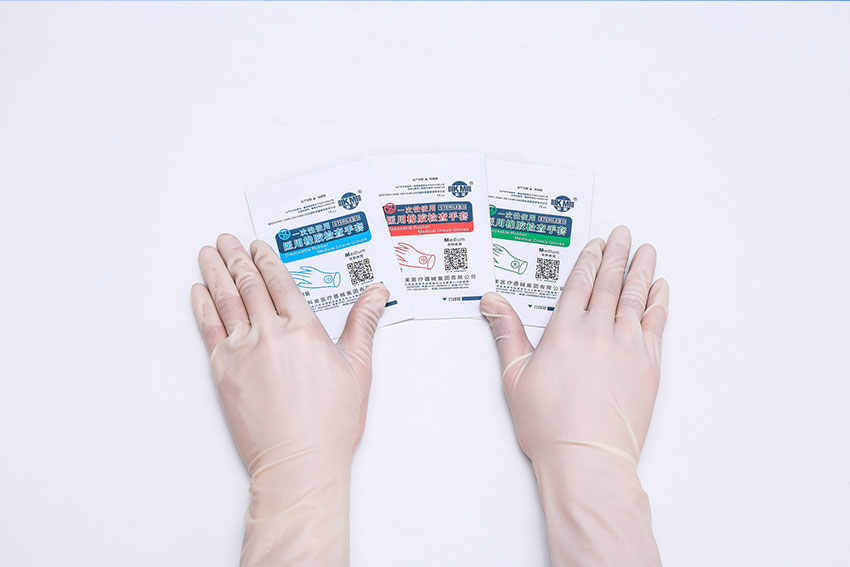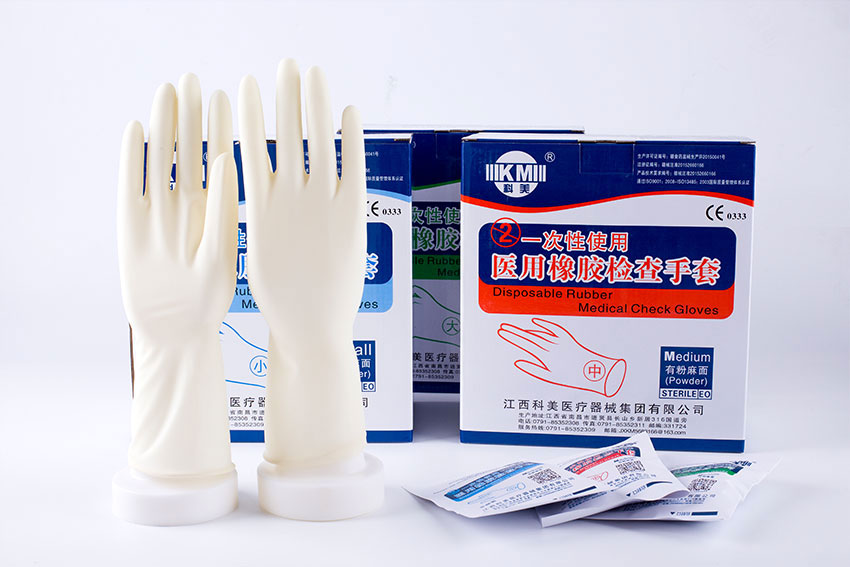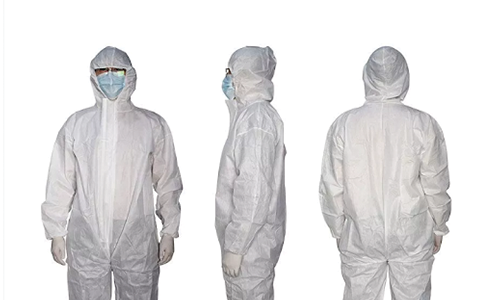
Medical gowns are certainly well down the list of necessities when it comes to guaranteeing cutting-edge infrastructure. Although they might not be as crucial as the tools needed for life support and medical care, they are unquestionably a vital part of hospital infrastructure that cannot be ignored.
The definition of comprehensive care cannot be limited to just the standard of care. It demonstrates that the hospital appreciates its patients and cares about their comfort and overall well-being and that it has given other medical equipment, such as hospital patient robes, significant thought. Isn’t that what hospitals should strive for, whether it be in terms of therapy or service?
Many people criticize medical gowns for being poorly fitted, scratchy, and made of flimsy fabrics. If you want to buy a medical gown, then don’t worry; we have got you covered with the complete medical gown buying guide (Relate: Ultimate Disposable Gloves Buying Guide). (Learn More: Ultimate Guide Of Medical Gauze).
What Are Medical Gowns?
Personal protective equipment, or PPE, is frequently utilized in healthcare settings. They are used to protect the user against the spread of disease-causing microorganisms when the wearer comes into contact with potentially contagious liquid or solid material. They could also be used to assist in stopping the wearer from spreading germs that might damage weaker patients, like those with weakened immune systems.
The purpose of gowns is to offer extensive barrier defense. The FDA has not yet certified, authorized, or recommended any gowns for particular prevention or protection against the COVID-19 virus.
Types of Disposable Medical Gowns
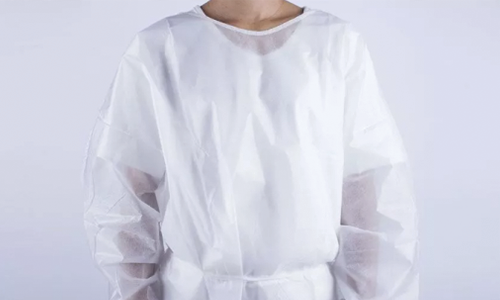
Medical Isolation Gown
Personal protective equipment, or PPE, is frequently utilized in healthcare settings. If the wearer comes into touch with potentially contagious liquid and solid material, they are used to shield the user from the transmission of infection or disease. They could also be used to help stop the person wearing the isolation gown from spreading germs that might damage more susceptible patients, like those with compromised immune systems. One element of a comprehensive infection-control plan is medical gowns.
Surgical gowns, isolation gowns, surgical isolation gowns, nonsurgical gowns, procedural gowns, and operating room gowns are just a few of the many names that have been used to describe gowns meant for use in healthcare settings.
Surgical Gowns
An FDA 510(k) premarket notification is required for a surgical gown, a Class II medical equipment. To protect them from the spread of germs, bodily fluids, and extraneous objects, medical workers often wear surgical gowns (Knowledge: How To Properly Wear and Remove Surgical Gown) during surgical procedures.
National guidelines have defined vital zones of protection due to the controlled nature of surgical procedures. The front of the body, from the top of the shoulders to the knees, and the arms, from the wrist cuff to above the elbow, are the important zones. All surgical gowns must be offered sterile and marked as such on the packaging.
Medical Disposable Coveralls
All of these terms apply to disposable cover suits, which are frequently used in hospitals, the chemical and food industries, laboratories, dust-free workshops, and other settings. Its job is to keep the environment clean and safe for workers by isolating pathogens, dangerous ultra-fine particles, acid and alkaline solutions, electromagnetic radiation, etc.
Protecting healthcare personnel and their patients from high-consequence infectious diseases (HCIDs), blood, bodily fluids, and bloodborne pathogens requires the use of appropriate disposable protective garments. Today, a lot of disposable coveralls are simply chemical suits marketed for healthcare facilities. They are uncomfortable to wear and don’t adhere to the most recent safety standards or putting on and taking off procedures.
Non-Surgical Gowns
In low or minimal-risk patient isolation circumstances, non-surgical gowns are used to shield the wearer from the spread of pathogens and bodily fluids. Non-surgical gowns are not used during invasive procedures or surgical operations when there is a medium to high risk of contamination. Similar to surgical isolation garments are non-surgical robes.
Medical Gowns for Patients
A hospital gown is “a loose-fitting clothing item worn in a hospital by someone having an operation.” It is occasionally referred to as a johnny gown or johnny, especially in Canada and New England. It can be worn by patients who are confined to beds.
Patients’ hospital gowns are made to make it simple for medical workers to access the area of the patient’s body that is being treated. The medical gown is tied at the back by twill tape ties and is constructed of a material that can survive repeated washing in hot water, typically cotton. Paper or thin plastic may be used to make disposable hospital gowns with paper or plastic ties.
To remove the gown without disturbing the intravenous lines in the patient’s arms, some gowns incorporate snaps along the top of the shoulder and the sleeves.
Disposable Gowns for Doctors
Doctors, nurses, surgeons, and other medical professionals wear these garments to protect themselves from bodily fluids, infections, and germs. The terms surgical gowns, isolation gowns, surgical isolation gowns, non-surgical gowns, procedural gowns, and operating room gowns are just a few that may be used to describe these garments. It is appropriate to always choose the appropriate gown because the various gown styles provide varying degrees of protection for low to high-risk circumstances.
Different PPE Gowns AAMI Level
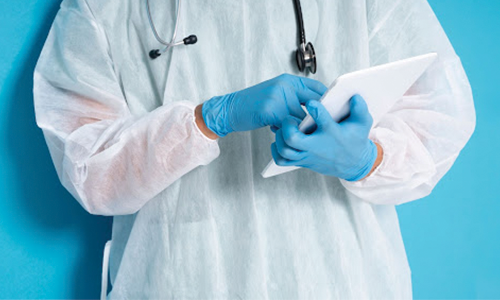
Understanding the key zones of a gown and what each degree of barrier performance entails is necessary for defining the best level of protection for the standard ANSI/AAMI PB70:2012 so that the best gown is selected for usage by healthcare professionals.
The front and sleeves of a gown are important zones, as these are the parts that are most likely to be exposed to fluids and blood-borne infections. Greater barrier protection is required for the entire critical zone as the level rises.
Level 1 Gowns
Water impact test with minimal fluid barrier protection of less than 4.5g. tested in water by AATCC42.
With minimal to no danger of fluid exposure, it is suitable for routine patient care. Usually unfit for use in the operating room.
Level 2 Gowns
Low level of fluid barrier protection: hydrostatic pressure test larger than 20 cm, spray impact test less than 1.0 g. tested in water by AATCC42 and AATCC127.
Suitable for minimally invasive surgical operations and fluid exposure at low risk.
Level 3 Gowns
Fluid barrier protection at a moderate level: hydrostatic pressure test larger than 50 cm, spray impact test less than 1.0 g. tested in water by AATCC42 and AATCC127.
It is commonly used as a surgical gown with an EO sterilization is appropriate for procedures with a low risk of fluid exposure.
Level 4 Gowns
In crucial zones, a high level of fluid barrier protection offers defense against blood-borne infections. Tested with Bacteriophage Phi-X174 as part of the ASTM F1671 Viral Penetration Test (for surgical and isolation gowns). Resistance to viral penetration and blood (2 psi)
It is commonly used as a surgical gown with an EO sterilized package and is suitable for high-risk fluid exposure and virus penetration for up to 1 hour.
What Are The Standards of Medical Gowns?
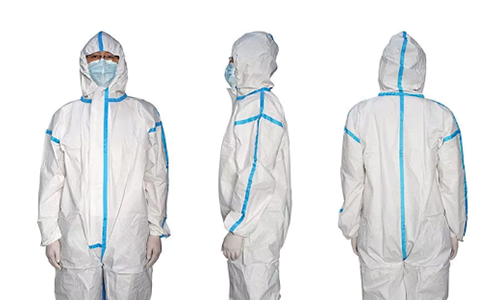
The American Society for Testing and Materials (ASTM) F2407 standards are used to evaluate the performance of robes.
Examining surgical gowns for tear resistance, seam strength, lint production, evaporative resistance, and water vapor transmission is covered in ASTM F2407, an umbrella document.
American Standard for Gowns
The Association for the Advancement of Medical Instrumentation, or AAMI, is responsible for creating these standards. The American National Standards Institute (ANSI)/AAMI PB70:2012 standard offers a classification system (levels 1, levels 2, levels 3, levels 4) based on liquid barrier performance utilizing standardized test techniques for protective gear used in healthcare institutions, including surgical gowns.
With ratings for various degrees of gown protection, the ANSI/AAMI PB70 standard contains four standard tests to assess criteria for liquid barrier performance.
EU Gown Standard
For single-use and reusable covering items, EN 13795 is a widely accepted European standard for quality and conformity to testing, manufacturing, and performance standards.
The divides goods into various performance categories:
- Standard Performance: For low to medium exposure risk, non-reinforced or fabric-reinforced
- High performance: reinforced polymer for high exposure risk
Testing Producers of Medical PPE Gowns
Testing medical gowns is a crucial stage in establishing the effectiveness and quality of the final product. To safeguard patients and medical professionals, gowns are utilized in a variety of healthcare situations. Surgical gowns, isolation gowns, surgical isolation gowns, non-surgical gowns, procedural gowns, and operating room gowns are all examples of medical garb. To achieve the greatest level of infection protection, particularly in hospitals, medical gown testing are essential.
1. Impact Penetration
Impact penetration testing shows how well a garment can withstand liquid splatters. In this test, blotter paper is placed behind the object, and then a predetermined amount of water is sprayed upon it. Better protection equates to less water penetration. Results for Level 1 gowns must be less than or equal to 4.5 grams, while results for Levels 2 and 3 must be less than or equal to 1.
2. Hydrostatic Pressure
When subjected to increasing pressure, the hydrostatic pressure test gauges how effectively the material resists water infiltration. Less water passing through the material indicates higher performance, just like with impact penetration. Hydrostatic performance testing is not performed for Level 1 gowns, and Level 2 and Level 3 gowns, the results must be greater than or equal to 20 and 50 centimetres, respectively.
Although water is used in both testing procedures, water has a far higher surface tension than blood. Blood can, therefore, more easily pass through materials. This is important to remember because a fluid-resistant garment does not always protect blood.
You’ll need to upgrade to the Level 4 gowns for blood penetration and bloodborne pathogen tests, which are tested for resistance to blood and viral penetration using ASTM standards F1670 and F1671. These criteria gauge penetration using a virus called Phi-X174, which is comparable in size to the hepatitis C, hepatitis B, and HIV viruses.
Sterilization Methods of PPE Medical Gowns
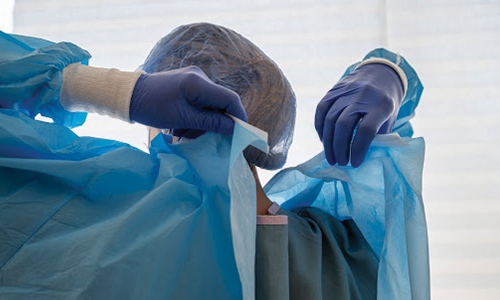
According to the final advice titled Submission and Review of Sterility Information in Premarket Notification (510(k)), the FDA advises sponsors to provide the following details for a device supplied sterile. Submissions for Sterile Devices with a Label. These details could consist of:
- Method of sterilization that will be applied.
- An explanation of the validation procedure, but not the validation results themselves, for the sterilization cycle (for established sterilization methods).
- For established sterilization techniques with FDA-recognized standards, reference to a standard procedure (such as the AAMI Radiation Standard) is typically adequate.
- The device’s sterility assurance level (SAL), which the company plans to meet. Surgical drapes and surgical gowns used during surgical operations must have a SAL of 10-6.
- An explanation of how well the packaging keeps the equipment sterile.
- The maximum amounts of ethylene oxide and ethylene chlorohydrin residues that can be left on a device after ethylene oxide (EtO) sterilization. The concentrations should adhere to the consensus standards for ethylene oxide that have been approved by the FDA.
- The radiation dose in the case of radiation sterilization.
What Material Are Hospital Gowns Made of?
Gowns are an essential part of the hierarchy of controls that are used to protect persons in medical settings as personal protective equipment (PPE) (Reddy et al., 2019). In most cases, nonwoven materials or a combination of nonwoven materials that provide additional protection against liquid penetration are used to make disposable isolation gowns.
To offer integrity and strength, they can be made utilizing several nonwoven fiber-bonding processes (thermal, chemical, or mechanical). Disposable isolation gowns are often made from a variety of synthetic fibers, such as polypropylene and polyethylene.
Polypropylene Spunbond and Polypropylene Spunbond-Meltblown-Spunbond (SMS), which are three layers of non-woven fabrics, are the materials used most frequently in disposable isolation gowns.
Because non-woven fabrics are less likely to produce lint or fluff, which could serve as a source of infection for patients, they are used more frequently than woven ones.
1. Spunbond-Melblown-Spunbond (SMS)
Multi-layered fabrics called spunbond-meltblown-spunbond (SMS) materials are frequently used in medical scrubs, face masks, drapes, and sterilization wraps. Their whole composition is polypropylene.
Both the fabrication of spunbond and meltblown non-wovens begin with a procedure known as spun-melt, but later diverge to produce other fiber types with various characteristics. By heating thermoplastic polymers (such as polypropylene, polyester, or nylon) and extruding them through a metal plate with a spinneret, spun-melt produces nonwoven webs. Similar to a garlic press, this extrusion procedure presses the ingredients through a grate to produce fibers that resemble string.
Spunbond Nonwoven Polypropylene
Extruding melted polymer via a spinneret to create long, thin filaments creates spunbond fabrics. These filaments (5–20 um in diameter) are gathered and begin to form a fibrous web on a conveyor belt that is moving. Following that, the nonwoven fiber web is moved between two heated rollers, which thermally fuse the web to improve its strength and tensile properties.
Meltblown Non-woven Spunbond Polypropylene
Like spunbond fibers, meltblown nonwovens begin with a spun-melt procedure. The procedure that follows the extrusion of filaments from the spinneret is distinct, as the freshly extruded fibers are instantly exposed to hot air streams moving at high speeds from both sides of the spinneret.
The molten polymer at the spinneret’s edge is struck by these hot air streams traveling quickly and is compressed into very small filaments (1–5 m in diameter). These fibers are broken down into shorter, discontinuous filaments by the quickly moving air, which is subsequently scattered randomly and gathered from a web on the roll below.
The structure of the meltblown material and the size of the fibers vary even though they are created from the same raw material as spunbond non-woven spunbond polypropylene. Meltblown fabrics feature numerous ultrafine fibers per unit weight and produce fabrics with a large surface area, which produces materials with superior filtering and insulating qualities. Meltblown NWPP, on the other hand, is more brittle, more difficult to sterilize, and could be dangerous to inhale.
2. Polyethene
A very practical material, polyethylene is employed as fiber to create products like hospital gowns. Thermoplastic polyethylene is a strong, lightweight material with a flexible crystalline structure (Omnexus, 2021). and is produced by polymerizing the monomer of ethylene (or ethene). Low-Density Polyethylene (LDPE) is a material that is incredibly flexible and has special flow characteristics that make it ideal for gowns and other plastic film applications.
Due to its inclination to stretch under stress, LDPE has a high degree of ductility but a low degree of tensile strength. Like all other polymers, polyethylene has benefits and drawbacks that make it more suitable for some applications than others.
Where to Get Hospital Gowns in Bulk?
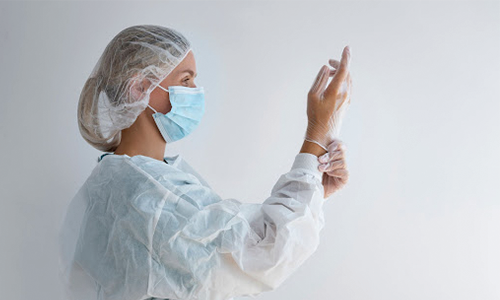
In addition to other crucial medical supplies, MedicalKemei specializes in surgical gloves, nitrile examination gloves, latex examination gloves, surgical masks, and disposable wholesale medical coveralls. MedicalKemei takes pride in being a major healthcare provider, isolation gowns manufacturer, and one of the best surgical gowns manufacturers and medical glove manufacturers in China, where its innovative medical collections are used in almost every healthcare establishment. We have always emphasized the superior quality and hygiene standards of our face masks and medical gloves ever since the firm was founded.
Healthcare facilities in developed countries prefer Kemei’s portfolio of medical protection solutions due to its unrivaled quality and dependability. Kemei has kept improving its manufacturing plant, i.e., medical gowns factories, in order to meet the growing demand for protective medical products worldwide. They have acquired numerous cutting-edge machines for quick and effective production.
They use this equipment in the process of production along with the standards outlined in the certificates we obtained from several inspection authorities. This makes sure that only the best medical supplies ever leave the facility.
Since Mr. Zhou Yiyuan founded Kemei, the company has concentrated on improving the abilities of medical professionals to treat patients. With time, they’ve continued to develop cutting-edge medical products like infusion stickers, surgical masks, and gloves that can improve the productivity of medical personnel.
As they create a comprehensive one-stop shop for your pharmaceutical and medical supply needs, they continue to identify solutions that will address new difficulties in the future. You can contact MedicalKemei to shop medical gowns in bulk.
Factors to Consider When Wholesale Disposable Medical Gowns
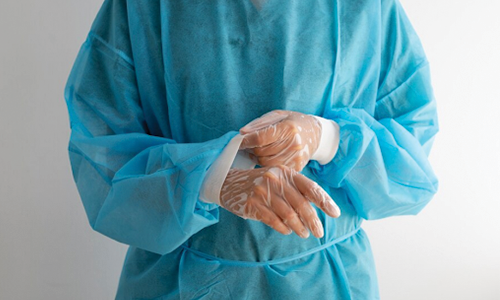
The levels of protection and the type of clothing are the two most crucial considerations when selecting the ideal gown for optimal protection. Following your determination of the essential liquid barrier performance, crucial zones of protection, and danger level, some other important factors include:
1. Fit
Even while some PPE comes in regular sizes, it’s crucial to utilize fitting medical gowns wherever possible. As well as limiting movement and creating discomfort, improperly fitting PPE can pose a serious threat to public safety. If the surgical robe is too tight, the surgeon may not be able to perform as well. A slack isolation gown could snag on equipment and endanger both the wearer and the patient’s safety.
Buy the appropriate sizes for personnel while buying medical attire. To achieve a suitable fit and optimal protection, take into consideration taking the employees’ measurements.
2. Breathability
Breathability can be a crucial safety issue in several situations. For instance, to operate comfortably and securely, employees in a stuffy laboratory or vaccination facility may need gowns made of more breathable material.
3. Sterility
The use of sterile robes is typically required for invasive operations or places that pose a risk of contamination. For routine patient care or low- to moderate-risk medical circumstances, non-sterile, reusable gowns are frequently adequate, although disposable gowns are safer.
4. Barrier qualities
How well a gown resists, liquids will often depend on the numerous materials that make up it. You will probably need fluid-resistant gowns if you anticipate fluid penetration. In contrast to the cotton textiles of disposable gowns, this is typically simpler to discover in the spun synthetic material of washable gowns.
FAQs
Why Are Hospital Gowns Open in The Back?
Open-backed hospital gowns are made to make it simple for medical personnel to reach any part of the patient that is needed.
How Much Do Hospital Gowns Cost?
Hospital gowns cost somewhere between $9.30 to $10.46.

